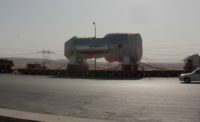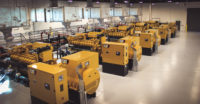The United States' International Development Finance Corp. (DFC) announced the approval of $412 million in financing and political risk insurance for a 126.5-MW West Africa LNG/combined cycle power plant project.
The power plant, the Western Area Power Generation Project, will be located in Sierra Leone’s capital of Freetown and is intended to help address the country’s rolling blackouts and expand its national electricity system to accommodate additional renewable energy solutions in the future.
DFC said the approved financing includes a new loan of up to $292 million to finance the development and upgrade of the power plant’s infrastructure and promote electricity reliability and access throughout Sierra Leone. The country’s power capacity is estimated at 150-MW with approximately 27.5% of the total population and about 4.9% of the rural population currently having access to electricity.
DFC’s financing also includes approximately $120 million in political risk insurance to bring in private investment to the project, which would be the first utility-scale, independent power project in Sierra Leone.
"DFC is proud to support the country’s first large utility-scale, independent power project and lay the foundation for reliable and affordable electricity in Sierra Leone,” said Nisha Biswal, Deputy Chief Executive Officer at DFC.
Kenya-based Milele Energy owns a 50.1% stake in the project while Middle East-focused turnkey power developer TCQ Power, with a 49.9% share, is providing equity for the project. Mumbai, India-based Shapoorji Pallonji has been picked as construction contractor.
Siemens Energy will supply gas and steam turbine equipment as well as long-term servicing, and operation and maintenance.
All the electricity generated from the plant will be sold to Electricity Distribution and Supply Authority (EDSA), the state agency responsible for the distribution and supply of electricity in Sierra Leone, under a 20-year power purchase agreement.
Phase one of the project will generate 83.5 MW with two GE LM2500 turbines in combined cycle with a steam turbine.
The second phase entails 43 MW of additional capacity from a second combined cycle power plant. Other work for the contractor includes upgrades to existing substations and construction of transmission lines to the existing electric grid.




